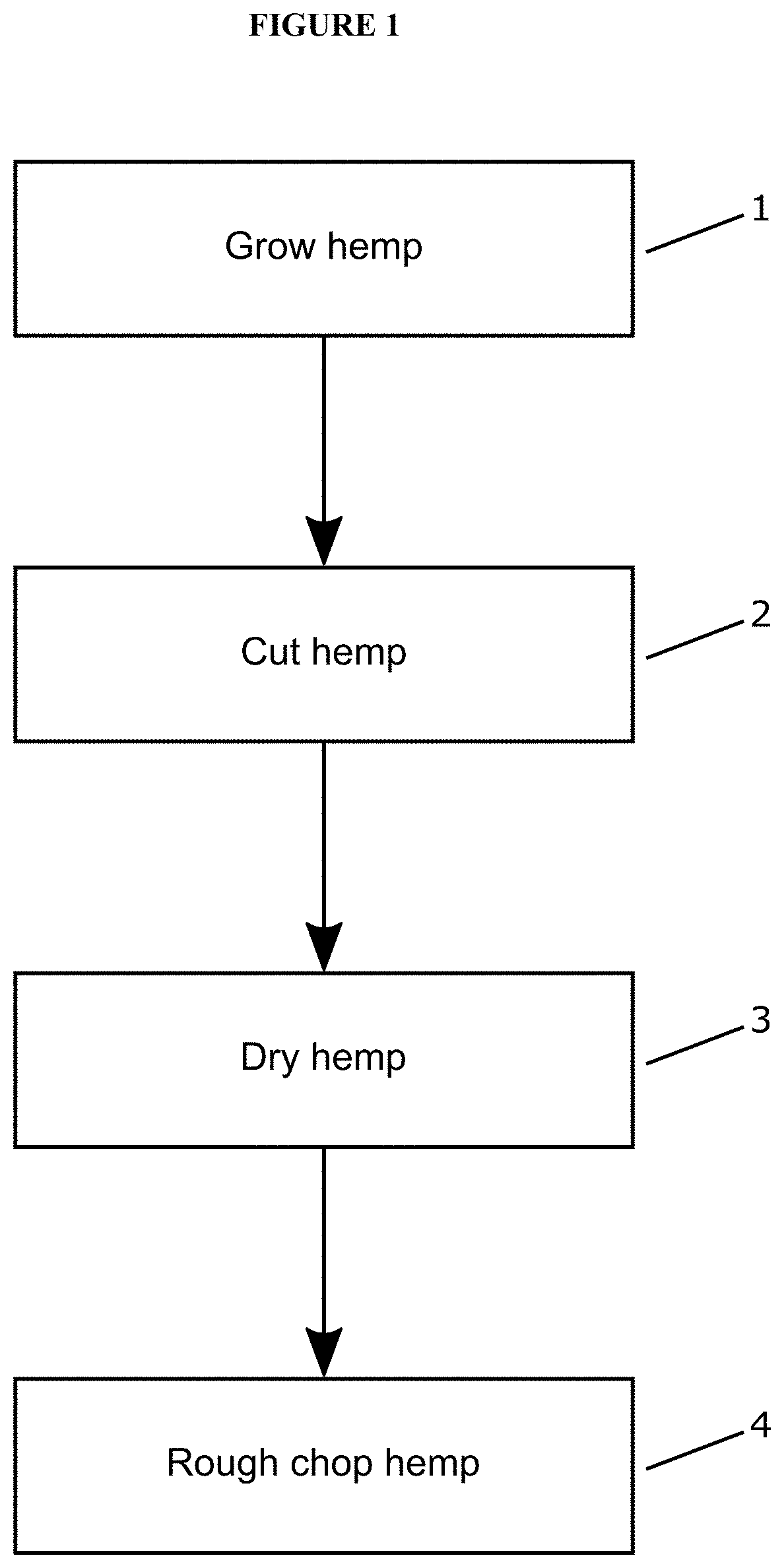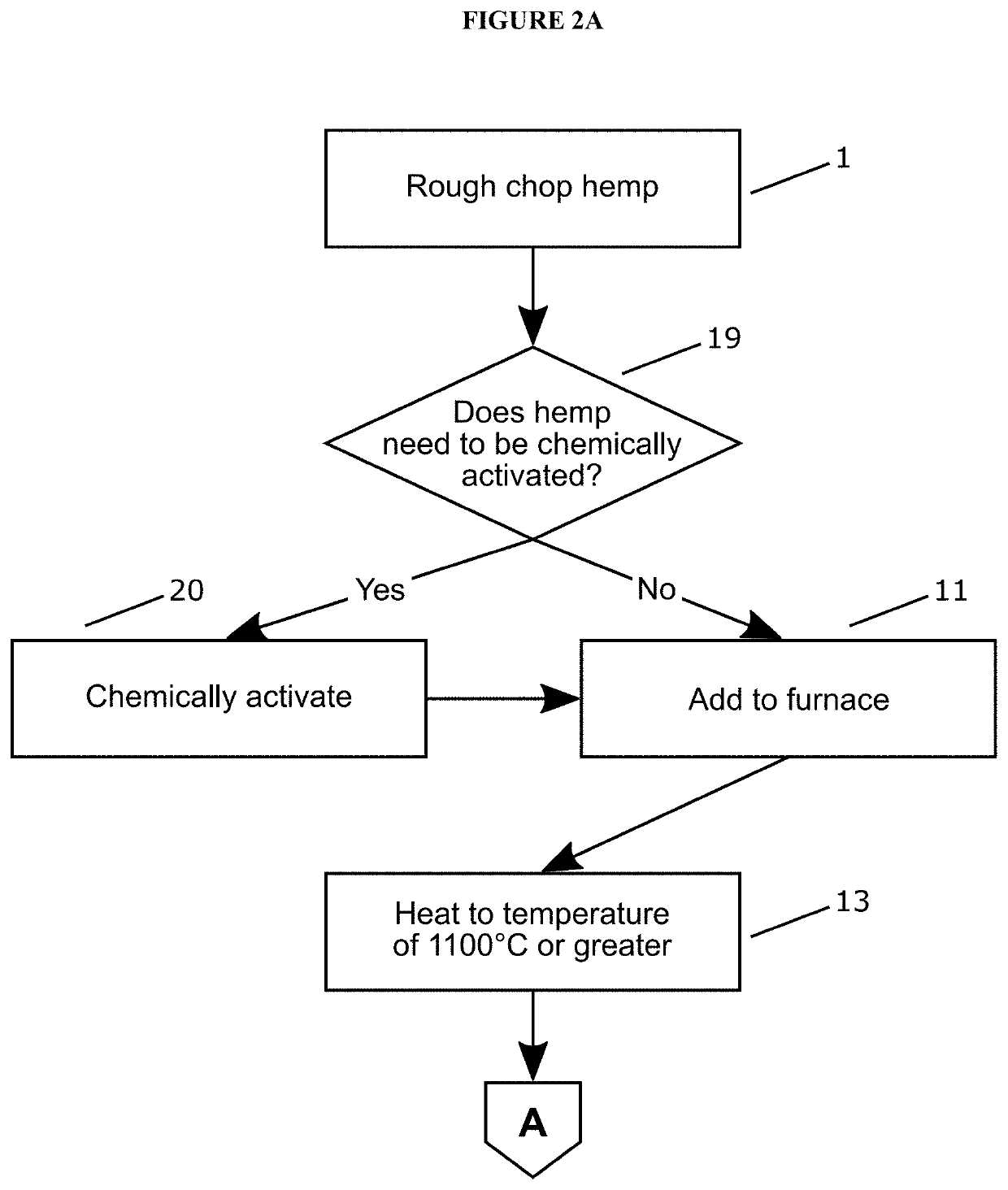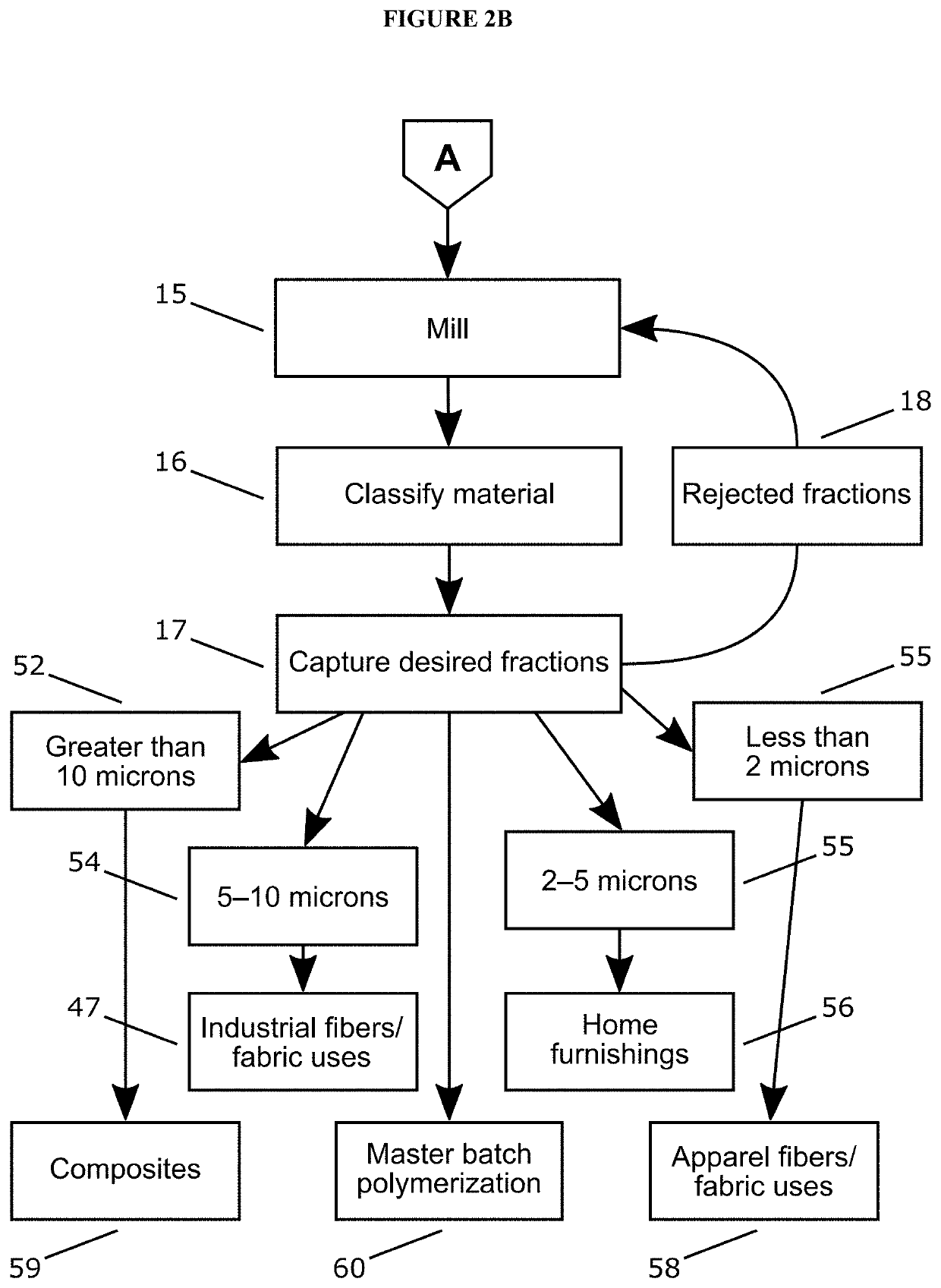High temperature bio-char carbonization and micron grinding and classification for inclusion into master batch polymerization
- Summary
- Abstract
- Description
- Claims
- Application Information
AI Technical Summary
Benefits of technology
Problems solved by technology
Method used
Image
Examples
experiment 1
WITH MORTAR AND PESTLE
[0105]10 grams of carbonized hemp made from hemp stalk (hurd and fiber) material was placed into a mortar and hand ground with a pestle. Grinding was performed for approximately 3 minutes, and the material was turned from small lumps into a fine powder. The powder material was then reviewed under a microscope for size. While a large portion of material was sufficiently ground to small sizes, there were significant amounts of material at larger sizes, due to incomplete processing. To quantify the amount of material below 2 microns, a 2-micron screen was utilized and approximately 45% of the material was below 2 microns.
[0106]The material larger than 2 microns was then reground for an additional 3 minutes and rescreened. An additional portion of material was generated below 2 microns. This process was repeated several times, with an average of 6.5 grams of material being less than 2 microns after two grindings, and a total yield of about 80%, meaning that about 2...
experiment 2
WITHOUT CLASSIFICATION
[0107]Experimental grinding included dry grinding in agar jars, with 3 mm agar balls. This provided a grind wherein about (“about” meaning ±10% of a number) 50% of the char material was ground below 2 microns. Timing for grinding in this application typically was between 3 and 7 hours, with almost no difference in the resulting particle size when increasing from 3 to 7 hours. Furthermore, moving to steel jars and balls also resulted in similar processing. About 50% of the material is greater than 2 microns, and of the 50% larger than 2 microns, the size varied all the way up to 100 microns in size, and so it was determined that this process alone, was insufficient to generate a material of uniform material of less than 2 microns in size and also met any precision tolerances for use in a master batch.
[0108]Among four tests, three used agar jars, with a total amount of material below 2 microns at 47%, 51% and 52%, and the steel jar at 49%.
experiment 3
WITH SINGLE STEP CLASSIFICATION
[0109]As Experiment 2, above, failed to generate a material having high uniformity of size, a classification step was added to aid in sorting material by size. Experimental grinding included dry grinding in agar jars, with 3 mm agar balls. This provided a grind wherein about 50% of the char material was ground below 2 microns as in Experiment 2. Timing for grinding in this application typically was between 3 and 7 hours, with almost no difference in the resulting particle size when increasing from 3 to 7 hours. Milling at 3 hours, 5 hours and 7 hours, each resulted amounts of material at about 50% of the total below 2 microns in size. Starting with a process that generated 50% of the material below 2 microns allowed use of a screening or classification system to collect the 2-micron and below material, and the remaining 50% of larger material above 2 microns is remilled in a subsequent processing. This process is repeated until a sufficient quantity of...
PUM
| Property | Measurement | Unit |
|---|---|---|
| Temperature | aaaaa | aaaaa |
| Length | aaaaa | aaaaa |
| Fraction | aaaaa | aaaaa |
Abstract
Description
Claims
Application Information
 Login to view more
Login to view more - R&D Engineer
- R&D Manager
- IP Professional
- Industry Leading Data Capabilities
- Powerful AI technology
- Patent DNA Extraction
Browse by: Latest US Patents, China's latest patents, Technical Efficacy Thesaurus, Application Domain, Technology Topic.
© 2024 PatSnap. All rights reserved.Legal|Privacy policy|Modern Slavery Act Transparency Statement|Sitemap



